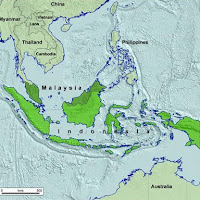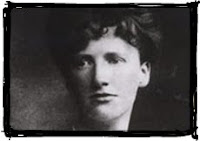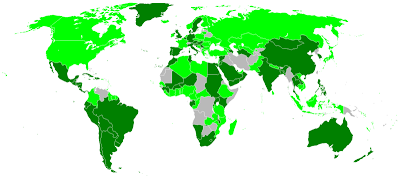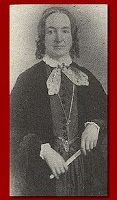

(credit for Italian New Year's card; credit for Soviet-era card; credit for French card)
bloggers ,how to ,twitter ,google ,traffic ,photos ,wordpress themes ,travel ,team members ,spirited woman ,search engines ,inspiration ,dashboard ,business ,blogspot ,blogging ,blogger templates ,blogger ,blog post
 On this day in ...
On this day in ... The Ragged Rebel: A Common Soldier in W. H. Parsons' Texas Cavalry, 1861-1865, B. P. Gallaway, Abilene Christian Universityc and Leafwood Publishing, Paperback, $17.99, February 2010.
The Ragged Rebel: A Common Soldier in W. H. Parsons' Texas Cavalry, 1861-1865, B. P. Gallaway, Abilene Christian Universityc and Leafwood Publishing, Paperback, $17.99, February 2010.

 The Grand Design: Strategy and the U.S. Civil War, Donald Stoker, Oxford University Press, 528 pages, July 2010.
The Grand Design: Strategy and the U.S. Civil War, Donald Stoker, Oxford University Press, 528 pages, July 2010. Maryland Campaign of September 1862: Volume One, South Mountain, Ezra Carman (author) edited and annotated by Thomas Clemens, Savas Beatie Publishing hardcover, 624 pages, $37.50.
Maryland Campaign of September 1862: Volume One, South Mountain, Ezra Carman (author) edited and annotated by Thomas Clemens, Savas Beatie Publishing hardcover, 624 pages, $37.50.  On this day in ...
On this day in ...The Indonesian leader charged that Malaysia was formed from the former British territories of Malaya, Singapore, and the Borneo states of Sarawak and Sabah (North Borneo) against the will of the people in order to maintain British influence in Southeast Asia.

 On this day in ...
On this day in ... Over the last year or so -- 358 days, to be exact -- we've posted periodically about the failure to bring to full Senate vote the nomination of our colleague Dawn Johnsen (left) to become head of the Office of Legal Counsel at the U.S. Department of Justice.
Over the last year or so -- 358 days, to be exact -- we've posted periodically about the failure to bring to full Senate vote the nomination of our colleague Dawn Johnsen (left) to become head of the Office of Legal Counsel at the U.S. Department of Justice. On this day in ...
On this day in ... Bill Mauldin: A Life Up Front, Todd DiPastino, W. W. Norton Publishing, 370 pp, illustrated, index, notes, 2008, $27.95 (hc), $14.95 (pb)
Bill Mauldin: A Life Up Front, Todd DiPastino, W. W. Norton Publishing, 370 pp, illustrated, index, notes, 2008, $27.95 (hc), $14.95 (pb) DiPastino's focus is on Mauldin's career and dwells on family issues as they relate to his journalism. The author's thorough research supports his frankness in describing the women, alcohol, and personal tensions in Mauldin's post WWII career. Containing more than ninety cartoons and photographs, DiPastino's work sets the reader within Mauldin's historical era. Accessible in style, DiPastino's work moves thoroughly but not tediously through WW II and post-war veteran issues, American journalism and politics, and the changes in Mauldin's drawing techniques. Bill Mauldin: A Life Up Front is recommended for advanced placement high school students and up. Anyone who enjoys reading a biography of a soldier and artist whom the odds of success were set firmly against, who at times created his own luck and at other times had unexplainable good fortune, who was born with a gift and did not squander it will be satisfied with DiPastio's work.
DiPastino's focus is on Mauldin's career and dwells on family issues as they relate to his journalism. The author's thorough research supports his frankness in describing the women, alcohol, and personal tensions in Mauldin's post WWII career. Containing more than ninety cartoons and photographs, DiPastino's work sets the reader within Mauldin's historical era. Accessible in style, DiPastino's work moves thoroughly but not tediously through WW II and post-war veteran issues, American journalism and politics, and the changes in Mauldin's drawing techniques. Bill Mauldin: A Life Up Front is recommended for advanced placement high school students and up. Anyone who enjoys reading a biography of a soldier and artist whom the odds of success were set firmly against, who at times created his own luck and at other times had unexplainable good fortune, who was born with a gift and did not squander it will be satisfied with DiPastio's work.  'The Awful Shock and Rage of Battle': Rethinking the Meaning and Consequences of Combat in the American Civil War, Eric T. Dean, Jr., War in History, 8:2 (2001), 149-165.
'The Awful Shock and Rage of Battle': Rethinking the Meaning and Consequences of Combat in the American Civil War, Eric T. Dean, Jr., War in History, 8:2 (2001), 149-165.  A third work of New Social History with which Dean contends is Divided Houses; Gender and the Civil War, edited by Catherin Clinton and Nina Silber (1992). Whereas Reid investigated the connections between home front women and battlefield soldiers, the essays in Divided Houses seize upon the conflicts between the genders. Union nurses thwarting male doctors authority, Confederate women being duped by the myth of sacrifice promoted by politicians, editors and generals. Hess welcomes explorations into the meaning of gender in the Civil war era. Yet an emphasis on conflict, separate identity, exploitation, hegemony, and cynical white males in a patriarchal society obscures the way in which the phenomenon of war pulled communities and families together rather than apart. (pp. 161-162)
A third work of New Social History with which Dean contends is Divided Houses; Gender and the Civil War, edited by Catherin Clinton and Nina Silber (1992). Whereas Reid investigated the connections between home front women and battlefield soldiers, the essays in Divided Houses seize upon the conflicts between the genders. Union nurses thwarting male doctors authority, Confederate women being duped by the myth of sacrifice promoted by politicians, editors and generals. Hess welcomes explorations into the meaning of gender in the Civil war era. Yet an emphasis on conflict, separate identity, exploitation, hegemony, and cynical white males in a patriarchal society obscures the way in which the phenomenon of war pulled communities and families together rather than apart. (pp. 161-162) Dean concludes that at times the New Social History, in similar ways to military history, narrows and make predictable the human experience of war. Race/gender/class based interpretations must be tempered by Clausewitz vision and understanding of war. Bridled and unbridled violence lies at the core of war. Historians should never lose sight of the fact that ware is about violence and the effect of violence on men, their families and communities is the "irreducible bottom line in warfare." Warfare has internal dynamics and is a driving force of its own. It is not a "mere continuation of society and social forces as one finds these in peacetime." Understanding soldiers and their families on their own terms and in their on contexts is required. Imposing race/gender/class agendas, preferences and beliefs accomplishes a distorted, self-serving picture rather than a revelation of truth. (pp. 163-165).
Dean concludes that at times the New Social History, in similar ways to military history, narrows and make predictable the human experience of war. Race/gender/class based interpretations must be tempered by Clausewitz vision and understanding of war. Bridled and unbridled violence lies at the core of war. Historians should never lose sight of the fact that ware is about violence and the effect of violence on men, their families and communities is the "irreducible bottom line in warfare." Warfare has internal dynamics and is a driving force of its own. It is not a "mere continuation of society and social forces as one finds these in peacetime." Understanding soldiers and their families on their own terms and in their on contexts is required. Imposing race/gender/class agendas, preferences and beliefs accomplishes a distorted, self-serving picture rather than a revelation of truth. (pp. 163-165).
 It's IntLawGrrls' great pleasure to welcome Dr. Mona Paré (left) as today's guest blogger.
It's IntLawGrrls' great pleasure to welcome Dr. Mona Paré (left) as today's guest blogger. in need. She taught children who lived in England's slums and helped children who'd survived war in Macedonia. Jebb was the founder in 1919 of the International Save the Children Union and author of the 1st international Declaration on the Rights of the Child. The League of Nations adopted that Geneva Declaration in 1924. Four years later Jebb died, at age 52. But her declaration inspired a movement that continues to this day, as evidenced by the United Nations' adoption in 1959 of the Declaration on the Rights of of the Child, and in 1989 of the Convention on the Rights of the Child.
in need. She taught children who lived in England's slums and helped children who'd survived war in Macedonia. Jebb was the founder in 1919 of the International Save the Children Union and author of the 1st international Declaration on the Rights of the Child. The League of Nations adopted that Geneva Declaration in 1924. Four years later Jebb died, at age 52. But her declaration inspired a movement that continues to this day, as evidenced by the United Nations' adoption in 1959 of the Declaration on the Rights of of the Child, and in 1989 of the Convention on the Rights of the Child. Having followed closely the negotiations on the disability convention as a member of the United Nations' disability programme team between 2003 and 2006, I was struck that this convention was rich and carried much potential for human rights and international law more generally. In this guest post I share some of my findings, based on my article “La convention relative aux droits des personnes handicapées : quel impact sur le droit international ?”, published recently in the Revue Générale de Droit International Public.
Having followed closely the negotiations on the disability convention as a member of the United Nations' disability programme team between 2003 and 2006, I was struck that this convention was rich and carried much potential for human rights and international law more generally. In this guest post I share some of my findings, based on my article “La convention relative aux droits des personnes handicapées : quel impact sur le droit international ?”, published recently in the Revue Générale de Droit International Public.The purpose of the present Convention is to promote, protect and ensure the full and equal enjoyment of all human rights and fundamental freedoms by all persons with disabilities, and to promote respect for their inherent dignity.
 The Convention was enthusiastically welcomed by the international disability community, which considers itself as the largest minority in the world.
The Convention was enthusiastically welcomed by the international disability community, which considers itself as the largest minority in the world.
 On this day in ...
On this day in ... 'The Awful Shock and Rage of Battle': Rethinking the Meaning and Consequences of Combat in the American Civil War, Eric T. Dean, Jr., War in History, 8:2 (2001), 149-165.
'The Awful Shock and Rage of Battle': Rethinking the Meaning and Consequences of Combat in the American Civil War, Eric T. Dean, Jr., War in History, 8:2 (2001), 149-165.  Clausewitz argued that war was not an anomaly but a logical, rational and unavoidable continuation of political controversy by other means. The New Social History tends to view the Civil War as a continuation of society, or social discourse by other means. Origins of the New Social History, Dean explains, lie in the late 19th and early 20th century, a time when society began to be scientifically studies and sociology was organized as a social science. English historians developed methods to study society during the era of the Industrial and French Revolution. Social history focuses on the study of the common individual and particularly peasants, yeoman farmers, urban laborers, and criminals. (pp. 151)
Clausewitz argued that war was not an anomaly but a logical, rational and unavoidable continuation of political controversy by other means. The New Social History tends to view the Civil War as a continuation of society, or social discourse by other means. Origins of the New Social History, Dean explains, lie in the late 19th and early 20th century, a time when society began to be scientifically studies and sociology was organized as a social science. English historians developed methods to study society during the era of the Industrial and French Revolution. Social history focuses on the study of the common individual and particularly peasants, yeoman farmers, urban laborers, and criminals. (pp. 151)Thus, Europe is 'blessed' with two distinct but closely related fundamental rights treaties supervised by two independent European courts -- the European Court of Human Rights and the [European Court of Justice]. It remains to be seen how these two fundamental rights systems will interact with each other and how they will accommodate possibly divergent or conflicting jurisprudence.
--Netherlands-based scholar Dr. Nikolaos Lavranos, in his ASIL Insight tracing the history, evolution, and future of efforts to constitutionalize regional integration in Europe. The 2 treaties to which he refers are: respecting the ECtHR, the 1950 Convention of Human Rights, and respecting the ECJ, the 2000 Charter of Fundamental Rights of the European Union, rendered binding by the December 1 entry into force of the Lisbon Treaty, on which we've posted.
 On this day in ...
On this day in ... Elisa Massimino, President and CEO of Human Rights First (photo, left (copyright 2008, Beowulf Sheehan/PEN American Center; see also IntLawGrrls post by Diane Marie Amann ) and Wade Henderson, President and CEO of the Leadership Conference on Civil Rights (LCCR), testified in person and led the NGO participation.
Elisa Massimino, President and CEO of Human Rights First (photo, left (copyright 2008, Beowulf Sheehan/PEN American Center; see also IntLawGrrls post by Diane Marie Amann ) and Wade Henderson, President and CEO of the Leadership Conference on Civil Rights (LCCR), testified in person and led the NGO participation.